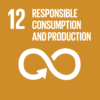Mainstreaming circular consumption with the sharing economy
Discussing how technology, the sharing economy and collaborative consumption can be better leveraged to close the circular consumption loop.
Summary of Discussion
Question 6: How can an actor like C&A Foundation, and its strategic partner Fashion for Good, drive more positive change?
- Help brands develop business case - proof of concept
- Support for innovation
- Fund projects for the long-term
- Work with fashion schools / colleges
- Support local actions
- Facilitator / bridge between stakeholders
- Help generate funding
- Engage government on industry-wide story
- Build on existing initiatives / infrastructure
- Get more corporate buy-in and help de-risk
- Tie in circularity with other social issues
Question 5: Which actors do we need to involve more effectively in order to make circular consumption mainstream in the fashion industry?
- Consumers - including teenagers, young children
- Schools - educating the next gen and fashion colleges
- Influencers - but what's in it for them?
- Media - engage mainstream media on circular stories e.g. Elle UK sustainability issue
- Policymakers - regulatory / financial incentives
- Peer support
- Coalitions and collaborations
- Brands - for leadership
- Investors and NGOs - to reward companies
- Suppliers - more responsible for impact
Question 4: What other solutions exist to help catalyze more circular consumption patterns among fashion consumers?
- Incentives e.g. free trials
- Better consumer insights and consistent communications - brands leveraging marketing power
- Getting influencers on board
- Higher quality and durability - promoting longevity
- New innovative methods of collection and reverse logistics
- More 'experience' models
- Brands and retailers offering subscription and repair services
- Service contracts
- Incentives for repair - making it cheaper and easier
Question 3: How do we help consumers value access over ownership, on a wider scale?
- Education - about where clothers come from
- Social media engagement - influencers to involve GenZ ("If Kim Kardashian started talking about ethical fashion, we'd change the world over night")
- Story telling and tapping into emotions and people's needs and desires
- Avoiding the 's' word
- Addressing pricing
- Focus on the benefits e.g. functional, emotiosl, social, financial - put consumer needs first
- Promoting access over ownership and 'lifestyle services'
Question 2: What are the challenges for fashion brands / retailers to switch to sharing and collaborative business models?
- Lack of consumer demand and insights on how to engage them
- Communicating consumer benefits - better marketing needed
- Shifting consumers from ownership
- Investment in infrastructure
- How to price new models -cost of renting
- Overall outdated retail model
- Identifying new models and complications e.g. customer data
- Conflicting objectives and targets
- Insufficient disruptors
- Not enough regulatory carrots and sticks
- Designing apparel that's timeless
- Quality issues - especially if clothes are rented
- Social stigma on sharing economy
Q1: What are the best examples of sharing and collaborative economy models delivering circular benefits, in and outside the fashion industry?
- Subscription models e.g. Vigga
- Focus on consumer benefits (sustainability is 2ndary) e.g. cash for 2nd hand clothes / uniqueness of 2nd hand
- Flea markets - sellling the 'experience'
- Flexible models e.g. GwynnieBee option to buy
- Online swapping e.g. swishing.co.uk
- Online marketplaces e.g. ebay
- Online thrift stores with lots of co-benefits
- Local community clothes lending libraries
Meet our Special Guests
Mistra Future Fashion
PwC Europe
VIGGA
MADE-BY
Enact Advisory
GlobeScan
Circle Economy
C&A
WWF Switzerland
C&A Foundation
Aston Business School
Global Action Plan
Reutlingen University
Ecopreneur EU
Session Moderator
Paris, France




Posts
Back to Top